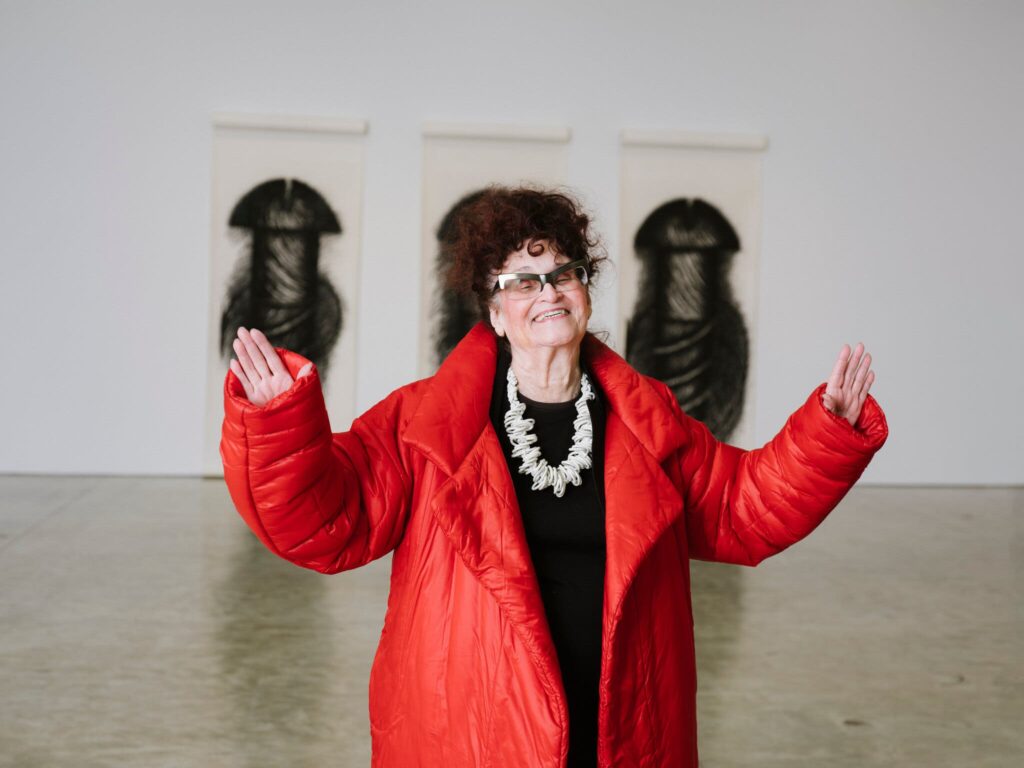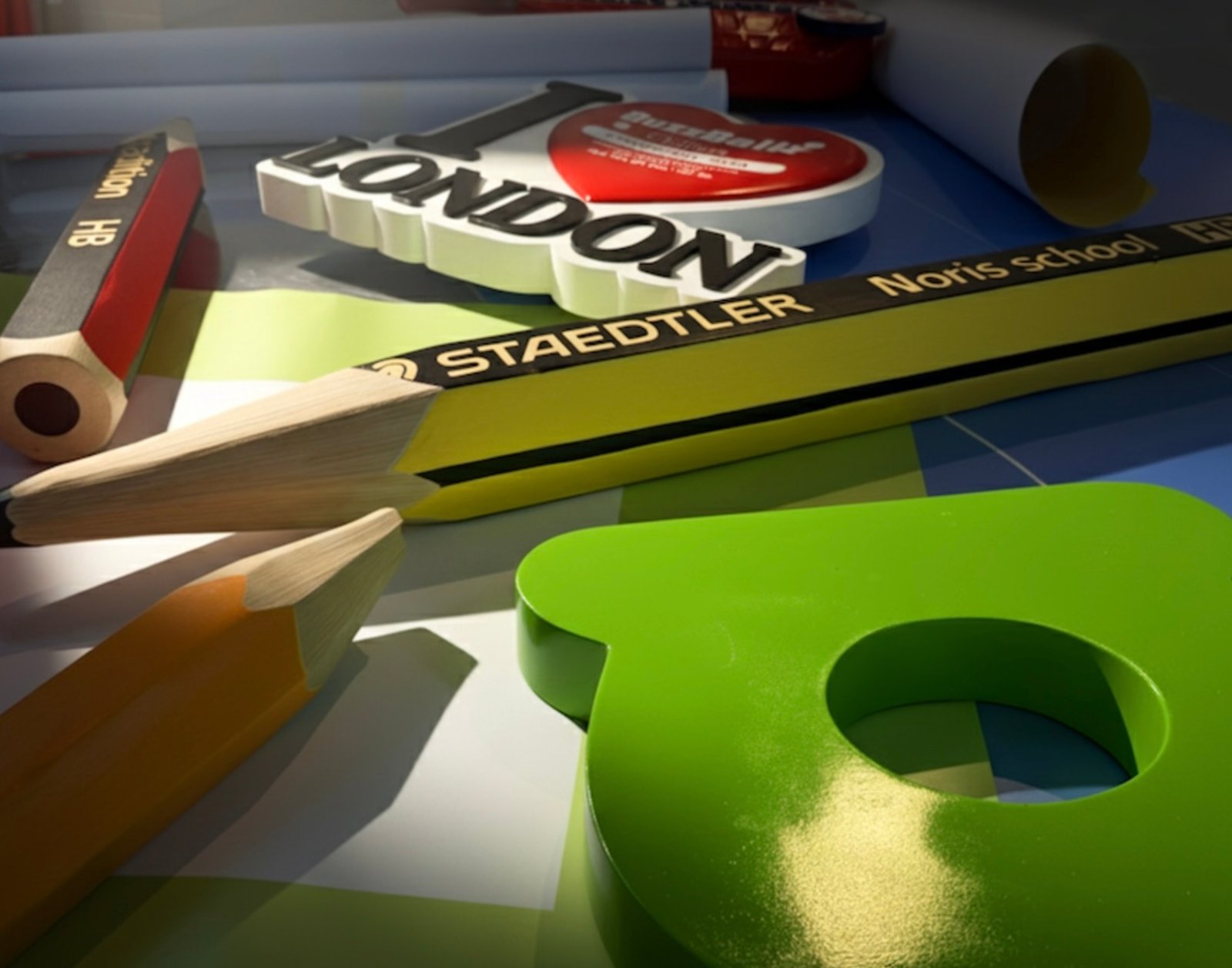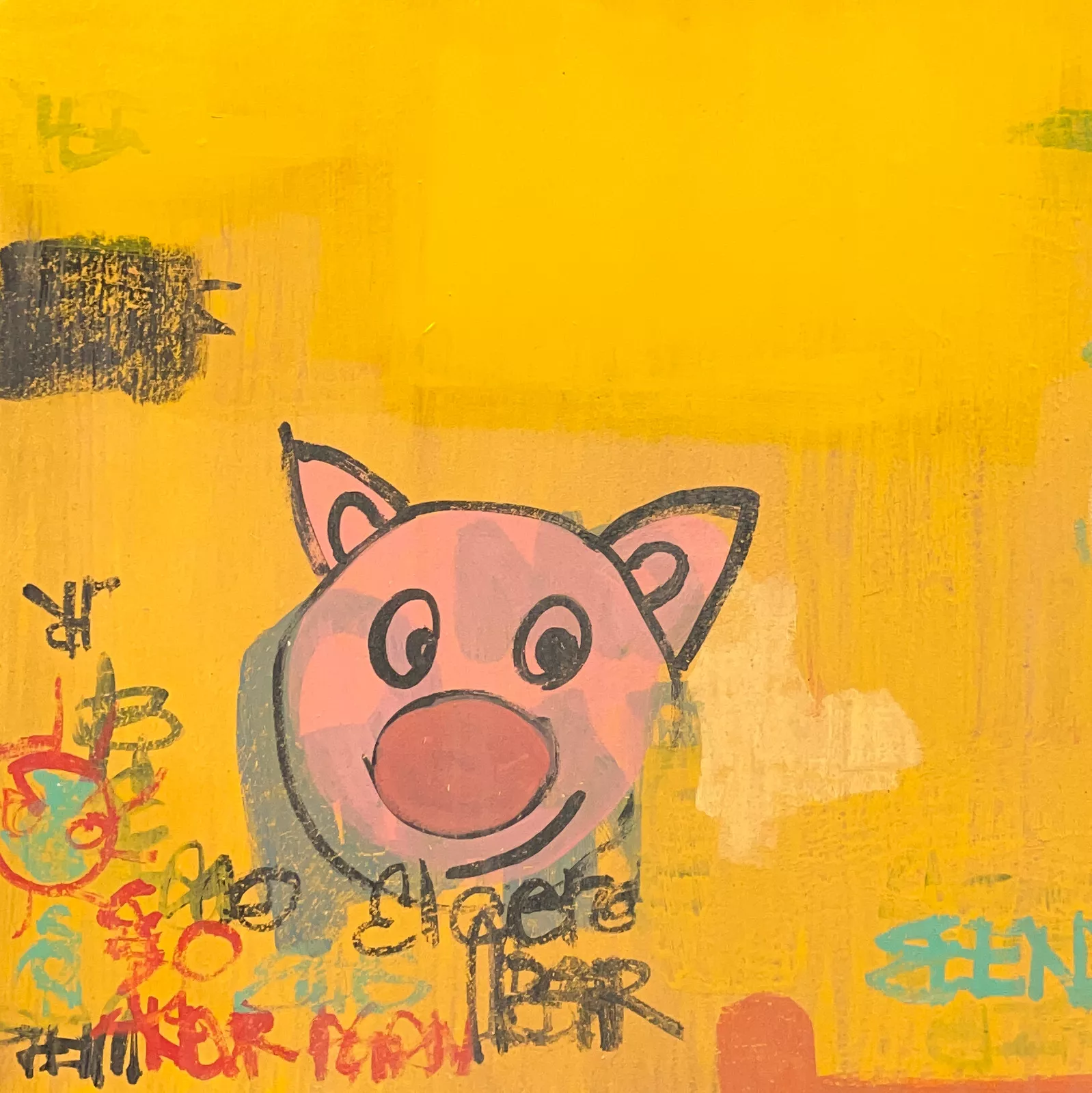At 82, Judith Bernstein remains a formidable force in the art world, unyielding and unapologetic. Her latest exhibition, “Public Fears,” at Kasmin Gallery in New York, offers a comprehensive survey of nearly six decades of her provocative and impressionable work. From her early charcoal drawings to her recent “Death Heads” series, Bernstein continues to confront societal taboos and political injustices with unrelenting vigor.
A Retrospective of Defiance
Opening on January 6, 2025, “Public Fears” marks Bernstein’s third solo exhibition at Kasmin Gallery. The show features a range of works from 1966 to the present, including new paintings, works on paper, and a restaging of her iconic “Signature Piece” from 1986. Notably, this is her first New York solo exhibition since The Metropolitan Museum of Art acquired her major charcoal screw drawing “Horizontal” (1973) in 2023.
The exhibition anticipates Bernstein’s major museum retrospective at Kunsthaus Zurich in 2026, underscoring the enduring relevance of her trailblazing artistry. Her work continues to resonate, reflecting the persistent societal issues she has long addressed.
The Evolution of a Provocateur
Bernstein first gained notoriety in the 1960s with her monumental charcoal drawings of phallic screws, which she used as symbols to critique militarism and masculinity during the Vietnam War. These works conflated war and sexual aggression, challenging viewers to confront uncomfortable truths about power and violence.
In “Public Fears,” a focal point is the groundbreaking set of three charcoal screws titled “Three Panel Vertical” (1977). Each panel is rendered in an explosively gestural manner, reigniting the momentous energy it inspired nearly 50 years ago. These “masterpieces of feminist protest,” as described by Ken Johnson for The New York Times, remain as potent today as they were at their inception.
Confronting Mortality: The “Death Heads” Series
Bernstein’s most recent series, “Death Heads,” adopts an inward-looking gaze, offering an introspective meditation on the sublimity of death. These iconographic heads appear at once transfixed in awe and in a state of active alarm, reflecting the tension fundamental to the poetic dyad of life and death. The paintings draw on the same gestural movements of Bernstein’s earlier screws and their use of serial repetition, yet they employ less tongue-in-cheek double entendre and more art historical and cultural nods to the past—from Edvard Munch to M17 gas masks. As much as these paintings reflect a climate of ubiquitous violence and uncertainty, they are, at their core, diaristic expressions of an artist confronting her own impermanence.
Unrelenting and Unrepentant
Throughout her career, Bernstein has remained unrelenting and unrepentant, confronting issues head-on with a combination of wit and outrage. Her work is characterized by its memorable visual impact and its fearless engagement with political and sexual themes. As she stated in a recent interview, “Subtlety is not my forte. My work is about the political and the sexual, the combination. The phallus is a power image. So, I use that a lot. I also use it for women because there’s no reason they can’t use it in their artwork. Men don’t have first dibs on using a phallus.”
Bernstein’s dedication to confronting societal taboos and injustices has not waned with time. At 82, she continues to create work that is as provocative and relevant as ever, challenging viewers to confront uncomfortable truths and encouraging dialogue about issues that remain pressing today.
A Legacy of Provocation
As “Public Fears” demonstrates, Judith Bernstein’s legacy is one of unflinching confrontation and fearless expression. Her work over the past six decades has consistently challenged societal norms and provoked critical discussions about power, sexuality, and politics. Unrelenting and unrepentant, Bernstein continues to wield her art as a powerful tool for social critique, inspiring both admiration and controversy.
In an art world that often shies away from overt political statements, Bernstein’s work stands as a testament to the power of art to provoke, challenge, and inspire. Her unyielding commitment to her vision and her fearless engagement with difficult subjects ensure that her work will continue to resonate for years to come.
As viewers engage with “Public Fears,” they are invited to reflect on the societal issues Bernstein has long addressed and to consider the ways in which these issues continue to manifest today. Through her art, Bernstein compels us to confront our own fears and prejudices, challenging us to see the world through her unflinching gaze.
In doing so, she reaffirms the enduring power of art to not only reflect society but to challenge and change it. At 82, Judith Bernstein is not merely coming back swinging; she is reminding us all of the vital role that art plays in the ongoing struggle for social justice and equality.
No comments yet.








